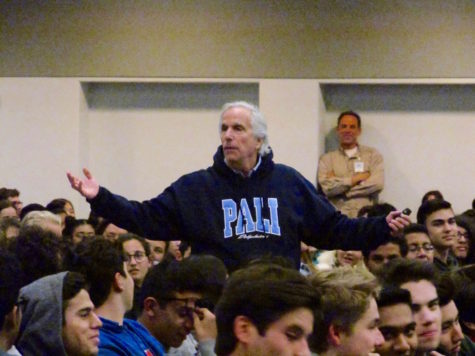Play Hard and Fall Harder
Torn ACLs, fractured fingers, sprained ankles and contusions are just some of the many injuries high school students obtain while participating in their athletic activities.
Many high school students dedicate their lives to athletics. They rely on the sports programs to keep them in shape, to get into college and on their favorite sports teams.
Athletes sprint hard and fall harder. But they refuse to let those injuries stop them from playing the game.
“There’s never a 100 percent recovery. There’s no time for that during the season,” senior varsity girl’s basketball player Julia Ide said.
Ide broke her ankle the summer before her senior year, and was instructed to let it heal for three months. She waited two. She got back on the court, and ignored her doctor’s recommendation to sit out for pre-season conditioning with her team. “Playing through an injury is knowing your body. It’s stretching properly, icing and protecting it so it doesn’t get worse.” She bruised the recovering bone and attained a stress crack, taking her out for that disregarded month of healing.
Whether it be in the name of their love for the sport or their coach’s pressure to perform, high school athletes will not back down from their athletic responsibilities. If anything, getting injured just makes them work harder. It intensifies their determination to play hard and to win.
A 2014 study by Safe Kids Worldwide sampled 3,000 teenage athletes, coaches and parents, and concluded that 53 percent of the coaches admitted to feeling pressured to put their injured players back into the game and 42 percent of the kids surveyed have downplayed or hidden their injuries in order to continue their athletic plans.
Athletes also conceal or understate their injuries to benefit the rest of their team.
“When you’re close to city finals, it is important to work through [the injury] because you’ve already made it that far into the season so it’s better to just push through,” Senior track and field runner Ejiro Agege said.
More than 2.6 million children of ages 19 and younger are brought to the emergency room to be treated for sports or recreation-related injuries per year, according to the Centers for Disease Control and Prevention. This however does not account for the hundreds of thousands of indifferent or similar injuries that go unreported and untreated.
There’s no one looking out for athletes. There are no required regular check-ups to confirm that teens are in the right physical condition to participate in sports programs. It’s really up to the teenage athletes themselves to advocate for their health and for their safety.
Senior cross country runner Ariel Pollack is just another one of the thousands of high school athletes that push through their injuries to keep up with their athletics.
“It’s important to listen to your body with any high level sport,” Pollack concedes. “But the pain is inevitable, so it’s good to push your limits and see how far you can go.”
Their dedication and drive is undeniably something worth noticing, but to what extent is it safe for an athlete to keep playing?



